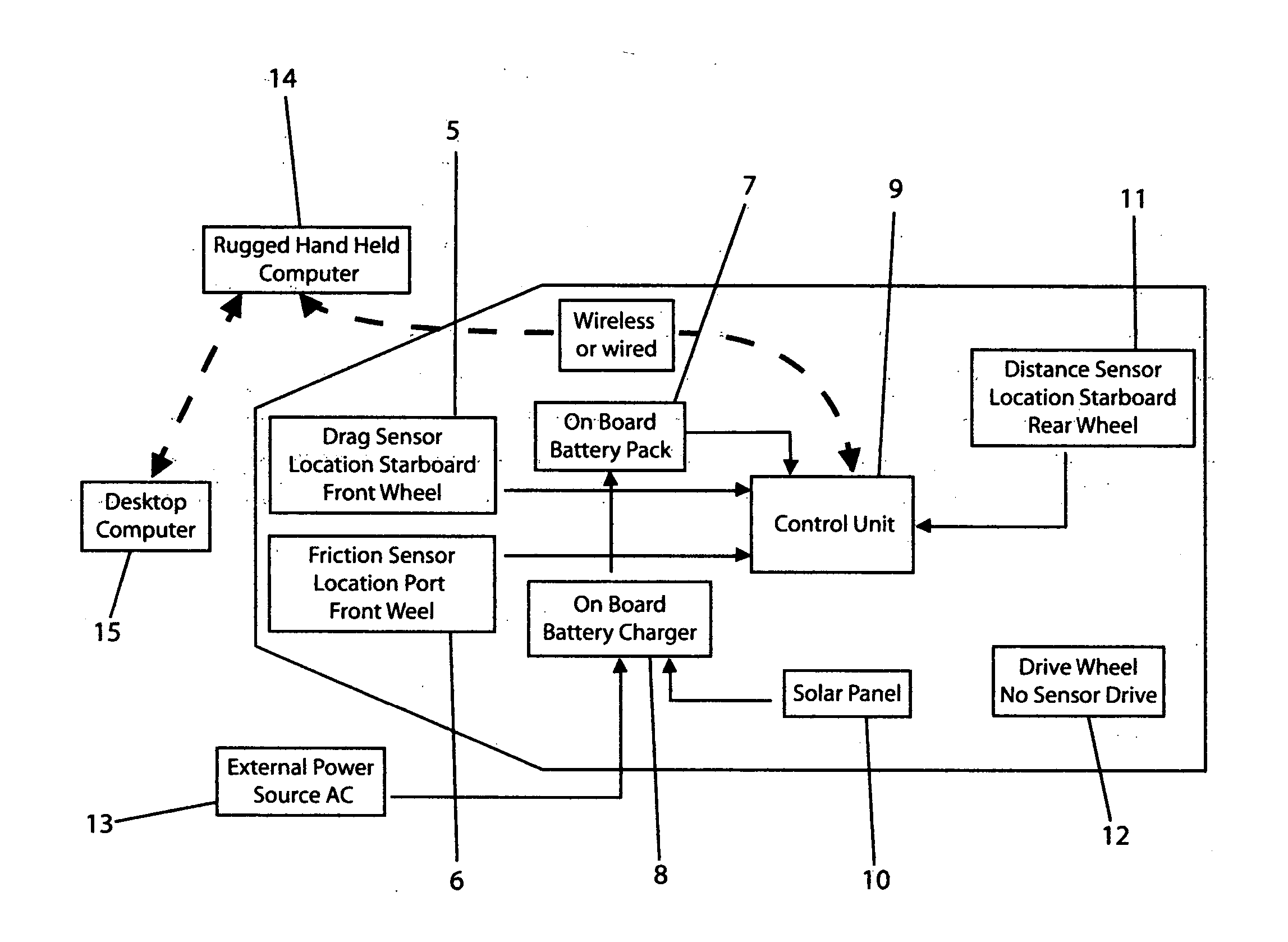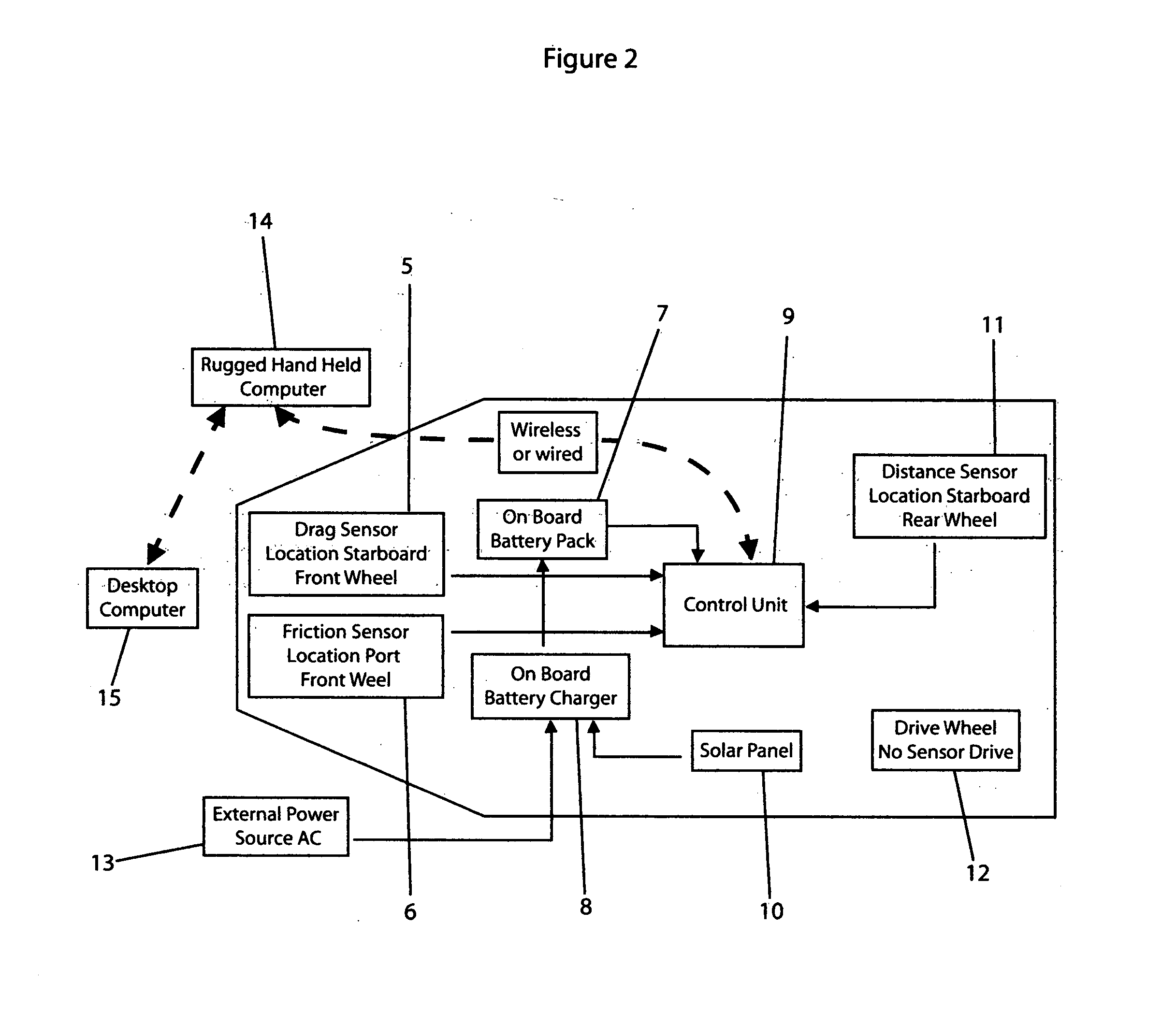Dynamic friction testing vehicle to measure fluid drag and rolling friction
a technology of fluid drag and rolling friction, which is applied in the field of dynamic friction testers (dft) systems and apparatuses, can solve problems such as expensive damage, and achieve the effects of reducing tow vehicle oscillations, facilitating apparatus movement, and eliminating wear factors
- Summary
- Abstract
- Description
- Claims
- Application Information
AI Technical Summary
Benefits of technology
Problems solved by technology
Method used
Image
Examples
Embodiment Construction
[0058] The present invention as shown in FIG. 1 is an apparatus comprised of the adjustable measuring tow hitch (2). A secondary non-measuring tow hitch (not shown) may be set below the measuring tow hitch (2) for non measurement towing. The nose cone (3) can contain a light bar (not shown) on its apex. Behind the nose cone (3) is located the water tank (4).
[0059]FIG. 2 shows a schematic representation of the DFT from a top view. The front of the vehicle contains the drag sensor (5) wheel and the friction sensor (6) wheel. Data obtained by these two wheels is sent to the control unit (9) as is all information obtained by the distance sensor (11) wheel. The onboard battery pack (7) is connected to the onboard battery charger (8). In circuit with the battery charger (8) is a solar panel (10) or plurality of said panels that provides constant trickling current to the battery pack (7). The drive wheel (12) is not attached to the control unit (9). A distance encoder (11) is installed on...
PUM
| Property | Measurement | Unit |
|---|---|---|
| speeds | aaaaa | aaaaa |
| operating temperature | aaaaa | aaaaa |
| speed | aaaaa | aaaaa |
Abstract
Description
Claims
Application Information
 Login to View More
Login to View More - R&D
- Intellectual Property
- Life Sciences
- Materials
- Tech Scout
- Unparalleled Data Quality
- Higher Quality Content
- 60% Fewer Hallucinations
Browse by: Latest US Patents, China's latest patents, Technical Efficacy Thesaurus, Application Domain, Technology Topic, Popular Technical Reports.
© 2025 PatSnap. All rights reserved.Legal|Privacy policy|Modern Slavery Act Transparency Statement|Sitemap|About US| Contact US: help@patsnap.com



